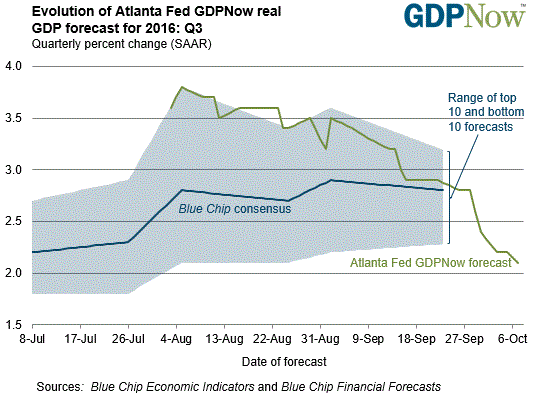Third-quarter earnings: Another reason to worry
Wall Street was hit hard on Tuesday as U.S. large-cap stocks threatened to break down and out of a two-month consolidation pattern.
The weakness coincided with the start of third-quarter earnings season, which aluminum maker Alcoa (AA) kicked off with a disappointing report before the bell. This bellwether’s poor showing set a negative tone for what’s likely to be a downtrodden few weeks as investors -- who have been distracted by the U.S. presidential election and the shifting odds of a Federal Reserve interest rate hike -- contend once more with the fact that Corporate America is in the midst of an ongoing profits recession.
In fact, with consensus expectations that S&P 500 earnings will decline 2.1 percent from the same period last year, the earnings slump will likely stretch into its sixth consecutive quarter. That’s a run of falling profits not seen since the Great Recession.
Given this, and the fact that stocks are trading near levels first reached in late 2014, valuations are growing increasingly stretched. So stocks are increasingly vulnerable to a downside correction.
The disappointment has been slow in coming: Back on June 30, as the third quarter was beginning, analysts were looking for profit growth of 0.3 percent. That optimism steadily faded amid ongoing weakness in energy prices, rising unit labor costs (on a tightening job market amid falling labor productivity) and a strong U.S. dollar (which reduces the value of foreign earnings).
While analysts believe earnings growth will return in the fourth quarter, there hasn’t been much progress in any of these areas. Chatter of an OPEC production freeze deal, with the possible support of Russia, has merely returned energy prices to June levels -- and any deal remains to be actually ratified and implemented. Job gains remains tepid but stable. And rising odds of a Fed interest rate hike before year-end have pushed the dollar to levels last seen in March.
The economy isn’t providing much of a lift either. The Atlanta Fed’s GDPNow real-time estimate of third-quarter growth has fallen from 3.8 percent in August to just 2.1 percent now (chart above). The U.S. economy’s second-half bounce-back remains elusive.
Yet analysts continue to believe the sky will soon brighten. They’re calling for fourth-quarter earnings to grow 5.6 percent from last year on a 5.2 percent jump in sales. This won’t be enough to save the full-year 2016 earnings growth rate from negative territory (they expect the year to show a 0.2 percent decline).
But they’re really preparing for a rip-roaring return to form in 2017: Earnings growth is now pegged at 13 percent on a 6.1 percent jump in revenues. Much of this is already priced into stocks, given high valuations: The forward 12-month price-earnings ratio for the S&P 500 stands at 16.7 vs. the five-year average of 14.9 and the 10-year average of 14.3.
As a result, any earnings disappointment risks further weakness in stock prices.

